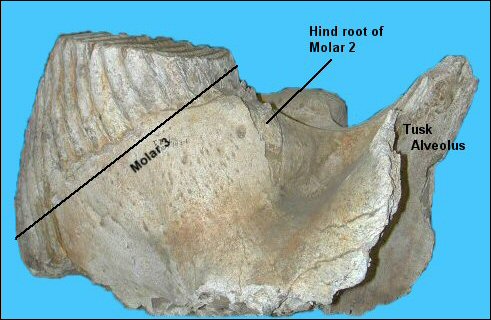

Successful reproduction is the one critical feature of natural selection, since the lack of success means the individual will be unrepresented genetically in subsequent generations. The constant winnowing out of the less successful variations in a species drives adaptation to the environment. Among mammals, teeth are vital—after all, if you're gumming it before you've reached maturity, your chances of producing successful offspring are pretty limited.
The extinct elephants known as mammoths are good examples of how far
natural selection can drive tooth evolution. To retard wear, teeth were so large that
only one tooth and part of another could fit into a jaw at any one time, stringing out
the eruption of teeth to some 30 years. To resist the abrasion of harsh grasses, teeth
were deep and complex, with vertical enamel plates held together with tooth cement. As
the teeth were used, enamel, dentine, and cement wore at different rates, leaving a
surface ideal for clipping plant material into small, digestible pieces—a task,
considering the amount of food required, one might characterize as elephantine!

Contributor: Arthur H. Harris, Laboratory for Environmental Biology, Centennial Museum, University of Texas at El Paso.
Desert Diary is a joint production of the Centennial Museum and KTEP National Public Radio at the University of Texas at El Paso.

The upper jaws of an Imperial Mammoth (Mammuthus imperialis) are shown in
upside-down position. The last (and largest) tooth to erupt is Molar 3. The front end
(right) had erupted to the point where it was wearing (flat surface), while the
posterior portion (a bit of which is missing) was still buried in the jaw bone. Molar 3
is approximately 14 inches long, measured along the line above the label. The molar
that erupted before Molar 3 has been pushed forward and worn almost entirely away--it
hindmost root is still present, however. The back portion of the socket (alveolus) for
the tusk nearest the camera also is visible. Centennial Museum specimen. Graphic by
A.H. Harris. ![]()